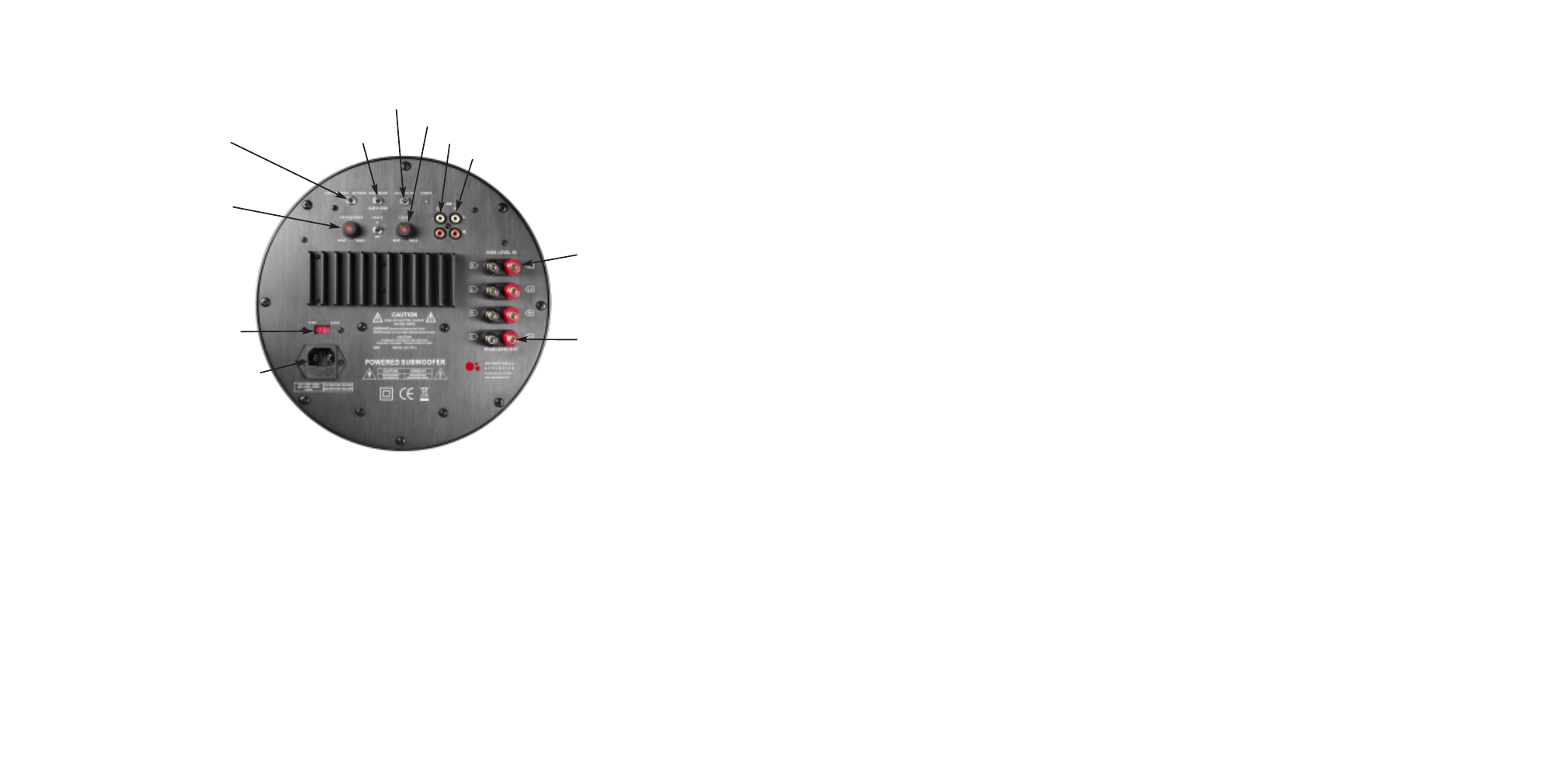Tr-3 subwoofer controls – Anthony Gallo TR-3 Subwoofer User Manual
Page 5

TR-3 Subwoofer Controls
Crossover Frequency: This control is variable from 50Hz to 180Hz. In technical parlance, that’s called
a low-pass filter. A low-pass filter does exactly what its name implies. It determines the frequency below
which signal is passed: Low…pass. Set to 50Hz, the TR-3 will reproduce bass below 50Hz. Set to
180Hz, it will reproduce bass and lower midrange below 180Hz.
Line-in/Line-out, Speaker-In/Speaker-Out (or High-Level/Low-Level Connections): These terminals
allow for either filter mode at speaker level or bypass mode at line or speaker level. In filter mode and
using the speaker in/out connections, the TR-3 inserts a fixed 80Hz high-pass filter. (6db per octave)
This allows you to subtract all bass below 80Hz from your satellite speakers when your receiver or
amplifier lacks a bass management facility. In this hookup, connect a speaker cable from your
amplifier/receiver binding posts to the TR-3 speaker-in terminals, then with a second pair of speaker
wires from the TR-3’s speaker-outs to the inputs of your main speakers. Remember to set the TR-3
crossover control to 80Hz to match the fixed high-pass to the variable low-pass.
Users with a modern Home Theater receiver or surround processor will use the bass management
facilities included with their electronics. For our own speakers, we recommend filter mode so as to not
run the Nucleus
®
Micro and A’Diva full-range. That’s because for best sonic performance, we elected not
to put any crossovers into these satellite models. Consequently, you should feed them a signal without
bass information. This will minimize the chances of overdriving them. Enter your receiver or surround
processor setup menu and select ‘small’ for the speakers. After making this selection, go into the bass
management section of the menu and set the crossover to between 100 and 120Hz for the Nucleus
®
Micro or between 80 and 100Hz for the A’Diva. These ranges reflect satellite variables of wall-mounting
(bass reinforcement) and free-air placement (minimized bass extension). Now connect the TR-3 by
interconnect from the “sub out” or “LFE” output of your receiver/surround processor and set the TR-3’s
crossover bypass switch to bypass. This bypasses it’s crossover and makes the bass management
settings the default mode.
WARNING: Running speakers contrary to these filtering instructions (i.e. full-range) can cause damage
to small satellite speakers made by us or other manufacturers and may not be covered under warranty.
6
TR-3 Subwoofer Controls
Crossover Control
Crossover Bypass
Level
Bass Boost
Line Out
Line In
High Level In
High Level Out
Universal Voltage
Power Inlet
5
The TR-3 is identical to the TR-1 in it’s enclosure. It then upgrades three important aspects: power, boost
and an aluminum cone driver. The TR-3 increases the TR-1’s 100 watts to 300 watts while EQ power
grows from –3 /0 /+3dB to 0 /+3 / +6dB. You probably know how an increase of 3dB of sound pressure
requires a doubling of power. Now you understand the difference between the TR-1 and TR-3 models:
they offer the same quality of sound yet the TR-3 has higher low output frequency and extension.
Level: This control matches the subwoofer’s output to that of the main speakers. Rotate the knob
clockwise to increase subwoofer volume, counterclockwise to decrease it. You will only need to set this
control once after you have installed the TR-3 in its final position after break in. Afterwards, the master
volume control on your preamp, integrated amp, surround sound processor or receiver will adjust the
volume of your main speakers and subwoofer in tandem. The TR-3’s level control merely sets the relative
balance between sub and mains. Think of it as a one-time balance adjustment between sub and mains.
On / Auto / Off
